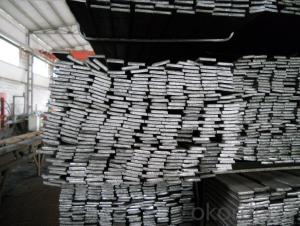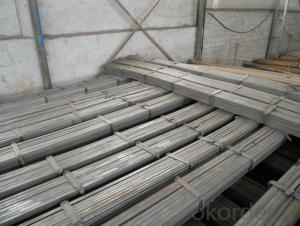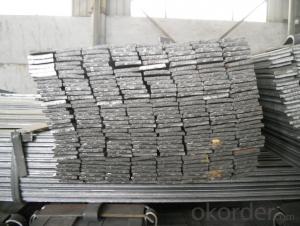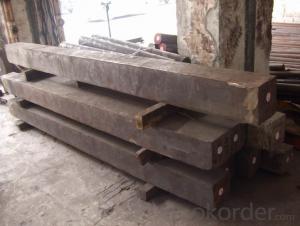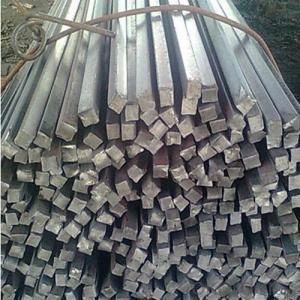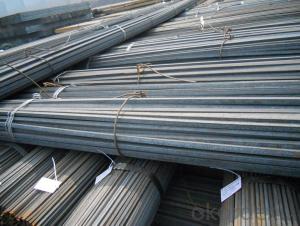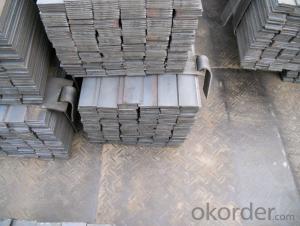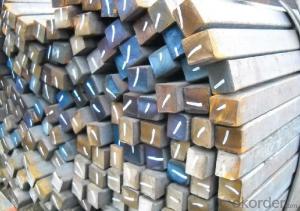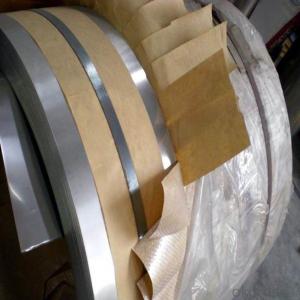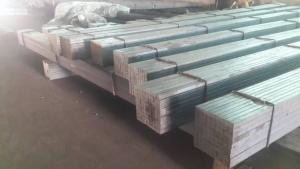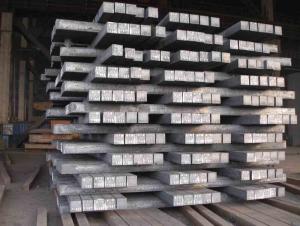Hot Rolled Steel Slit Flat Bars and Hot Rolled Flat bars
- Loading Port:
- Tianjin
- Payment Terms:
- TT or LC
- Min Order Qty:
- 25 m.t.
- Supply Capability:
- 200000 m.t./month
OKorder Service Pledge
OKorder Financial Service
You Might Also Like
Product Description:
OKorder is offering Hot Rolled Steel Slit Flat Bars and Hot Rolled Flat bars at great prices with worldwide shipping. Our supplier is a world-class manufacturer of steel, with our products utilized the world over. OKorder annually supplies products to European, North American and Asian markets. We provide quotations within 24 hours of receiving an inquiry and guarantee competitive prices.
Product Applications:
Hot Rolled Steel Slit Flat Bars and Hot Rolled Flat bars are ideal for structural applications and are widely used in the construction of buildings and bridges, and the manufacturing, petrochemical, and transportation industries.
Product Advantages:
OKorder's Hot Rolled Steel Slit Flat Bars and Hot Rolled Flat bars are durable, strong, and resist corrosion.
Main Product Features:
· Premium quality
· Prompt delivery & seaworthy packing (30 days after receiving deposit)
· Corrosion resistance
· Can be recycled and reused
· Mill test certification
· Professional Service
· Competitive pricing
Product Specifications:
Manufacture: Hot Rolled Steel Slit Flat Bars and Hot Rolled Flat bars
Grade: Q195 – 235 ;SS400
Certificates: ISO, SGS, BV, CIQ
Length: 6m – 12m, as per customer request
Packaging: Export packing, nude packing, bundled
Chemical composition of Q235
Alloy No | Grade | Element(%) | ||||
C
| Mn
| S
| P
| Si
| ||
Q235
|
B
|
0.12—0.20 |
0.3—0.7 |
≤0.045 |
≤0.045
|
≤0.3
|
Physical properties of Q235
Alloy No | Grade | Yielding strength point(Mpa) | Tensile strength (Mpa) | Elongation after fracture(%) | ||||||
Thickness (mm) | Thickness (mm) | |||||||||
≤16 | >16--40 | >40--60 | >60--100 | ≤16 | >16--40 | >40--60 | >60--100 | |||
≥ | ≥ | |||||||||
Q235 |
B |
235 |
225 |
215 |
205 |
375--500 |
26 |
25 |
24 |
23 |
FAQ:
Q1: How soon can we receive the product after purchase?
A1: Within three days of placing an order, we will begin production. The specific shipping date is dependent upon international and government factors, but is typically 7 to 10 workdays.
Q2: How do we guarantee the quality of Hot Rolled Steel Slit Flat Bars and Hot Rolled Flat bars?
A2: We have established an advanced quality management system which conducts strict quality tests at every step, from raw materials to the final product.
Q3: The products are invoicing on theoritical weight or on actual weight basis ?
A3: We can do it in both manners, according to buyers' requirement.
Q4: What is the normal tolerance of your falt bars ?
A4: Normally 7%-9%, but we can also produce the goods according to the customers' requests.
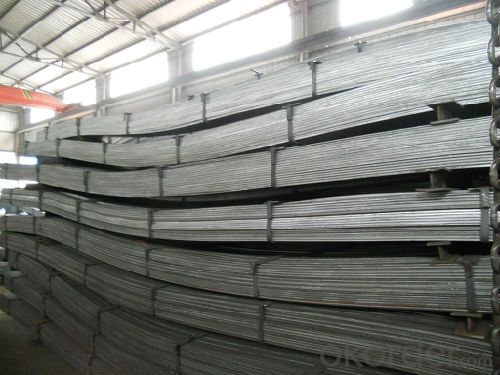
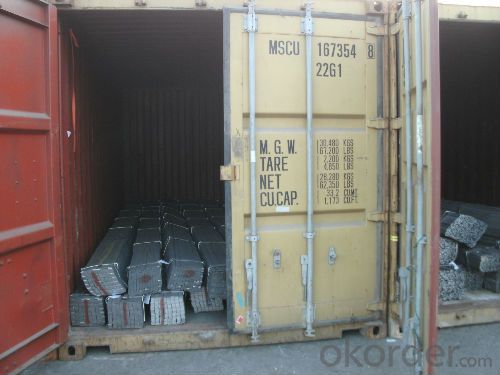
- Q: Can a steel square be used for checking the squareness of a floor tile?
- No, a steel square cannot be used for checking the squareness of a floor tile. A steel square is primarily used in woodworking and carpentry for measuring and marking angles, not for assessing the squareness of tiles.
- Q: Can a steel square be used for setting up a jointer?
- Yes, a steel square can be used for setting up a jointer. A steel square is a versatile tool that can be used for measuring and checking the accuracy of angles, making it suitable for aligning the blades and fence of a jointer.
- Q: Can a steel square be used for measuring circular objects?
- No, a steel square cannot be used for measuring circular objects. A steel square, also known as a carpenter's square or a framing square, is a tool designed for measuring and marking right angles. It consists of a long straight edge and a shorter perpendicular edge, forming an L-shape. While it can be used for various purposes in carpentry and woodworking, it is not suitable for measuring curves or circular objects. For measuring circular objects, a tool such as a compass, a tape measure, or a set of calipers would be more appropriate.
- Q: How do you use a steel square to determine the angle of a compound bevel and miter cut?
- To use a steel square to determine the angle of a compound bevel and miter cut, you would follow these steps: 1. Start by setting your steel square on the edge of the material you are cutting, with one leg (the longer leg) against the surface of the material and the other leg (the shorter leg) sticking up in the air. 2. Adjust the position of the steel square so that the longer leg is aligned with the edge of the material. 3. Once the square is aligned, use a pencil or a scribe to mark a line along the shorter leg of the square onto the surface of the material. 4. Next, rotate the steel square to the desired angle for the compound bevel cut. This can be done by loosening the square's locking mechanism and pivoting the square on the longer leg. 5. Once the square is at the desired angle, align the longer leg with the line you previously marked on the material. 6. Use a pencil or scribe to mark a line along the longer leg of the square onto the surface of the material. 7. The intersection of the two marked lines will give you the angle of the compound bevel cut. 8. To determine the miter cut angle, measure the angle between the marked line along the longer leg of the square and the edge of the material. This will be the angle at which you need to set your miter saw or miter gauge. By following these steps, you can effectively use a steel square to determine the angle of a compound bevel and miter cut, ensuring accurate and precise cuts in your woodworking or construction projects.
- Q: How do you use a steel square to measure the height of a window opening?
- To use a steel square to measure the height of a window opening, you can place the square vertically against one side of the window frame, ensuring that the long edge of the square is flush against the frame. Then, extend the square upwards until it reaches the top of the window opening. By reading the measurement marked on the square where it aligns with the top of the frame, you can determine the height of the window opening.
- Q: How do you use a steel square to determine the angle of a compound fluting cut?
- To use a steel square to determine the angle of a compound fluting cut, you will need to follow these steps: 1. Start by positioning the steel square on the workpiece in a way that its long side is parallel to the edge of the material you want to flute. 2. Align one of the edges of the steel square with the edge of the material. Make sure it is firmly held in place. 3. Next, draw a line along the other edge of the steel square onto the material. This line will serve as a reference for the angle of the fluting cut. 4. Measure the angle between the reference line and the desired direction of the fluting cut. You can use a protractor or a bevel gauge to get an accurate measurement. 5. Once you have determined the angle, transfer it to your cutting tool or machine. This could be a router, a table saw, or any other tool capable of making the fluting cut. 6. Set up your cutting tool or machine to match the measured angle. This may involve adjusting the table or fence on a table saw, or changing the angle of the router bit. 7. Double-check your setup to ensure that the tool or machine is aligned correctly before starting the cut. 8. Finally, make the compound fluting cut by carefully guiding the material through the cutting tool or machine, following the determined angle. Remember to always prioritize safety when working with cutting tools or machines. Wear appropriate protective gear and follow the manufacturer's instructions to prevent accidents and injury.
- Q: How do you use a steel square to determine the length of a retaining wall?
- To use a steel square to determine the length of a retaining wall, follow these steps: 1. Begin by finding a level surface where you can work comfortably. Place the steel square on this surface. 2. Position the steel square against the edge of the retaining wall, ensuring that it is flush and perpendicular to the wall. 3. Slide the steel square along the wall until it reaches the end. Make sure to keep it aligned with the wall edge throughout this process. 4. Once the steel square reaches the end of the wall, take note of the measurement on the steel square corresponding to the edge of the wall. This measurement will indicate the length of the retaining wall. 5. If the retaining wall is longer than the length of the steel square, repeat the process by aligning the square with the previous measurement and sliding it further along the wall until you reach the next section. Add up the measurements obtained from each section to determine the total length of the retaining wall. It's important to use a steel square that is in good condition and properly calibrated to ensure accurate measurements. Additionally, make sure to take into account any irregularities or curves in the wall when using the steel square for measurement.
- Q: How do you use a steel square to measure and mark chamfered angles?
- In order to measure and mark chamfered angles using a steel square, it is necessary to follow a series of steps. Begin by ensuring that your steel square is clean and devoid of any debris or rust. This will guarantee precise measurements and markings. Next, identify the specific angle at which you wish to create a chamfer. Typically, a chamfer is a 45-degree angle, but this may vary depending on your individual project. Position the steel square against the material's edge where you intend to create the chamfer. Align one side of the square with the material's edge and ensure it is securely in place and level. Once the square is positioned, use a pencil or marker to make a mark along the square's edge. This mark will create a straight line representing the chamfer's edge. To determine the length of the chamfer, measure the distance from the marked line to the desired endpoint of the chamfer. Obtain an accurate measurement using the steel square's ruler markings or a separate measuring tool, such as a tape measure. After determining the length, utilize the steel square to mark the endpoint of the chamfer. Align the square with the marked line and make another mark at the desired length. Lastly, connect the two marks to form the chamfered line. For a straight and precise line, use either the steel square or a straight edge. Prior to cutting or shaping the material, it is crucial to double-check your measurements and markings. It is advisable to practice on scrap material or make test cuts to ensure the accuracy of the chamfer before proceeding with your final project.
- Q: Can a steel square be used for shelving installation?
- Shelving installation can indeed utilize a steel square. This multipurpose tool, also referred to as a framing square or carpenter's square, finds widespread application in construction and woodworking projects. Composed primarily of steel, this tool comprises two arms that intersect at a 90-degree angle, forming a right angle. Utilizing this right angle, one can ensure that shelving units are installed in a level and square manner. By employing the steel square, one can effectively mark and measure the positioning of brackets or supports, guaranteeing their proper alignment and even spacing. Moreover, the straight edge of the steel square serves to verify the straightness and alignment of the shelves themselves. Overall, the steel square proves to be a dependable tool that greatly aids in the precise and accurate installation of shelving units.
- Q: How do you use a steel square for marking stair baluster spacing?
- To use a steel square for marking stair baluster spacing, you would first measure the desired spacing between each baluster. Then, place the square on the stair tread and align one edge with the edge of the tread. Use the markings on the square to measure and mark the desired spacing on the tread. Repeat this process for each baluster, ensuring consistent spacing throughout.
Send your message to us
Hot Rolled Steel Slit Flat Bars and Hot Rolled Flat bars
- Loading Port:
- Tianjin
- Payment Terms:
- TT or LC
- Min Order Qty:
- 25 m.t.
- Supply Capability:
- 200000 m.t./month
OKorder Service Pledge
OKorder Financial Service
Similar products
Hot products
Hot Searches
Related keywords
